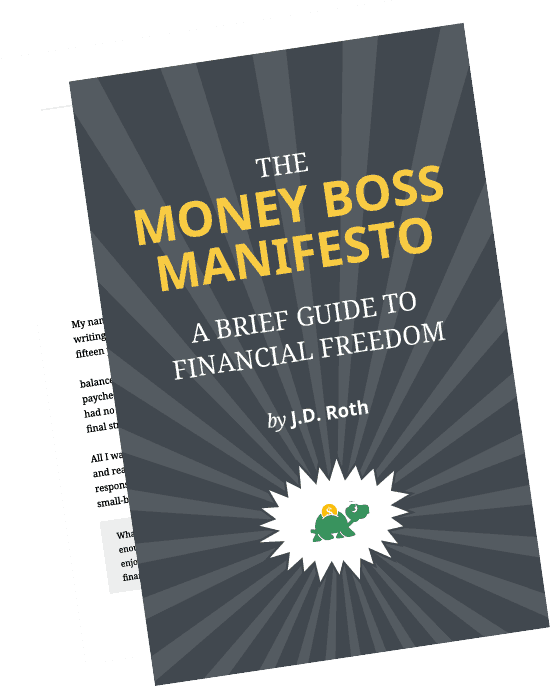All Your Worth: The Ultimate Lifetime Money Plan Book Review
 Three years ago, I decided to get out of debt. I hit the books, reading one personal finance title after another, searching for answers. Two books — Your Money or Your Life and The Total Money Makeover — were perfect for my situation. They gave me the tools I needed to tackle my problems. Now I’ve found a third book that would have been useful at the start of my journey to financial freedom.
Three years ago, I decided to get out of debt. I hit the books, reading one personal finance title after another, searching for answers. Two books — Your Money or Your Life and The Total Money Makeover — were perfect for my situation. They gave me the tools I needed to tackle my problems. Now I’ve found a third book that would have been useful at the start of my journey to financial freedom.
All Your Worth: The Ultimate Lifetime Money Plan, published in 2005, was written by the mother-daughter team of Elizabeth Warren and Amelia Warren Tyagi. These women don’t get bogged down in the details of frugality and investing. They’re more interested in changing behavior, in fixing the big stuff. They offer a framework around which the reader can build lasting financial success.
A Balanced Budget
Though Warren and Tyagi would have you believe that their system is different from anything that’s ever been published, it’s not. It puts a different spin on things sometimes, but ultimately their advice is similar to that found in most other solid personal finance books. All Your Worth is about creating a budget.
So what is the secret to riches? Why do some people get ahead, while others constantly struggle? Our research led us to a very simple and incredibly powerful financial principle that you won’t hear anywhere else — balance…When your money is in balance, you always have enough to pay your bills, have some fun, and save for your dreams.
When the authors write about balance, they’re writing about budgets. In order to succeed financially, Warren and Tyagi believe you need keep three broad areas of your finances “in balance”. They say to:
- Allocate 50% to Needs (which the authors call Must-Haves). Needs include housing, transportation, groceries, insurance, and clothes you really need.
- Spend 30% on Wants. Wants include cable television, clothing beyond the basics, restaurant meals, concert tickets, comic books, knitting supplies, etc.
- Set aside 20% for Savings, including debt repayment.
Warren and Tyagi want you to save a lot and have fun. To achieve this, they encourage you to reduce your Needs. In fact, this is the cornerstone of their advice.
Needs: Count the Dollars, Not the Pennies
Unlike many personal finance authors, Warren and Tyagi tend to be anti-frugality. They don’t believe that is pays to skimp on the things that bring you pleasure. They advocate saving money on the most expensive things so that you can still afford your morning coffee.
Here’s a little secret that other financial books won’t tell you: Savvy money managers don’t spend a lot of time looking for ways to save a few pennies. They charge right ahead to the big-ticket items, looking to make high-impact changes in the shortest period of time. They don’t sweat the small stuff. And neither will we.
Warren and Tyagi believe that most people get the big stuff wrong, and that if this can be corrected, then quick and drastic improvements can be made. They don’t think you should shop for generic toothpaste, rinse out your ziploc bags, or make your own laundry detergent — they think you should focus your attentions on getting the most favorable mortgage possible (on a house you can actually afford), ditch long-term contracts, and look for ways to save on other big-ticket items.
If you can get the big stuff right, if you can cut your costs on your Needs, then you should be able to reduce spending in this area to below 50% of your take-home pay. If you blow your budget here, though, it makes everything else more difficult. Suddenly you don’t have enough money to save or to purchase the things you want.
Wants: If You Can’t Afford Fun, You Can’t Afford Your Life
If you’re practicing balanced spending for your Needs, the All Your Worth plan allows you to spend 30% of your take-home pay on whatever you want. Do you want to eat out ever night? Do you want to buy comic books? Do you like to have a closet full of shoes? Have you been wanting to take a trip to Italy? Do you long for a deluxe widescreen high-def plasma television with 250 channels? Whatever you want, you can have, as long as you don’t spend more than 30% of your money on it.
Warren and Tyagi say that you shouldn’t worry about what you buy with your Wants money — you should worry about how you spend it. People get into trouble when they pursue their Wants without regard to the other aspects of a balanced financial life. To keep from danger, the authors suggest:
- Set clear limits. Stick to your budget. Know how much you can afford to spend on your Wants and do not exceed this amount.
- Use cash. Cash will prevent you from overspending, and will safeguard against problems with credit cards. One way to make this work is to withdraw your 30% Wants budget in cash at the start of every month. When the cash runs out, you’re done with your Wants.
- Beware of emotional spending. I wrote about compulsive spending a couple weeks ago. Warren and Tyagi warn that this sort of behavior can throw things out of balance.
In many ways, allocating 30% to Wants is revolutionary. I’ve looked at a number of suggested budgets lately, and none of them allocates this much for fun. So long as you keep other aspects of the All Your Worth plan in balance, you really can have this much to spend as you please.
Savings: Build Your Dreams a Little at a Time
The final step in the All Your Worth plan is to save and invest 20% of the money you earn. Despite the authors’ claim that they couldn’t find any other good personal finance books, they seem to have cribbed this portion of their plan directly from Dave Ramsey. They recommend the following steps for your saving and investing budget:
- Save a $1,000 emergency fund.
- Repay your debt, starting with the debt that bothers you most.
- Bolster your emergency fund to cover six months of Needs.
- Begin saving and investing for wealth.
Once your debt is repaid and you have set aside money for emergencies, you should begin investing for your future. The authors divide the 20% Savings budget as follows:
- Save for retirement by investing in index funds. (10%)
- Pay down your mortgage (or save for a home). (5%)
- Save for other goals, such as purchasing a car or taking a vacation. (5%)
I like this idea, and intend to use it myself, but with some modifications. For example, in 2008, Roth IRA contribution limits rise to $5,000. That’ll be more than 10% of my monthly take-home pay, so my retirement contribution percentage will be higher than the All Your Worth plan.
Conclusion
The book fleshes out each of these ideas in greater detail, and includes chapters on buying a home, relationships and money, and “financial CPR” — how to handle things when times get rough.
I like All Your Worth. Its advice is solid. It does a great job of looking at the Big Picture, allowing each reader to fill in the details. But the book does have some flaws:
- I don’t like the repeated condemnation of frugality and thrift. I think they’re important.
- The authors claim their advice is different from other personal finance books, but it’s not. Their advice is excellent but it is not new.
- Warren and Tyagi sometimes make wild assumptions, such as a 12% annual stock market return.
These problems aren’t severe — just annoying.
If you’re struggling with debt and looking for a plan to get things right, then borrow this book from your public library. For those who complain that most financial advice — including that at Get Rich Slowly — is geared too much at the middle-class, and isn’t appropriate for those who earn less and who are struggling, All Your Worth may offer some answers.
Become A Money Boss And Join 15,000 Others
Subscribe to the GRS Insider (FREE) and we’ll give you a copy of the Money Boss Manifesto (also FREE)
